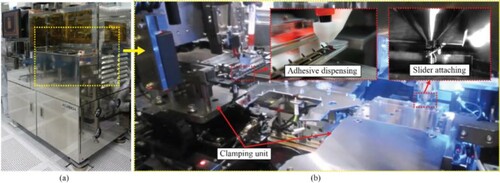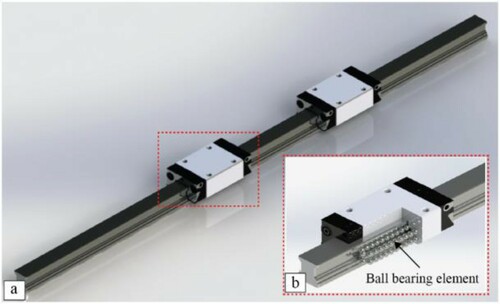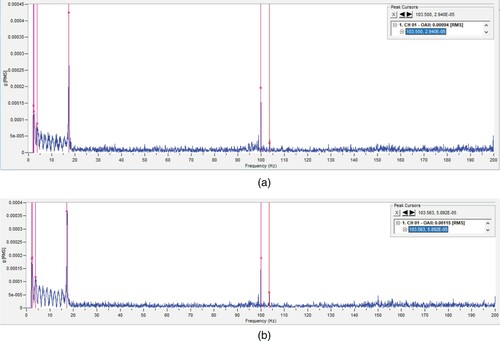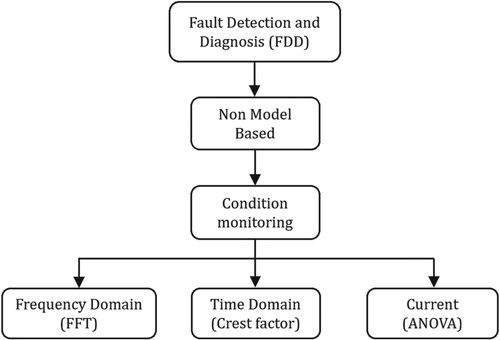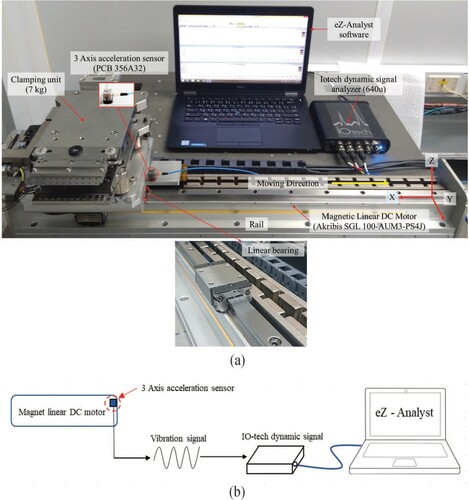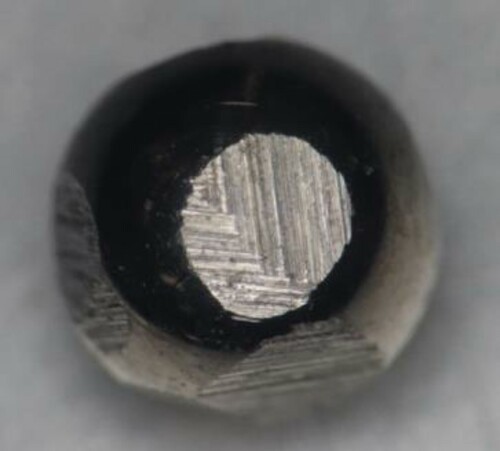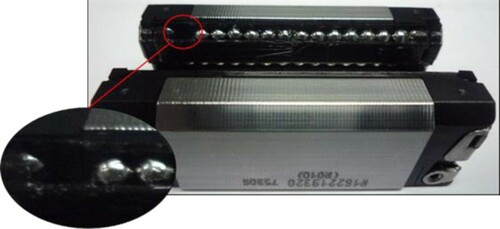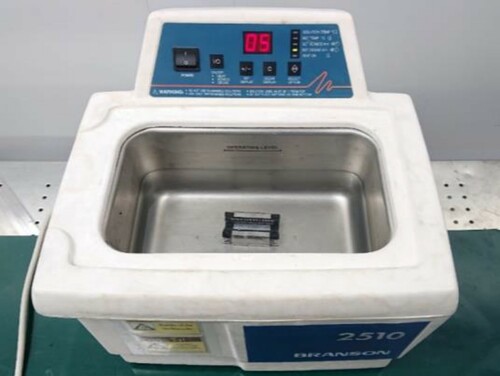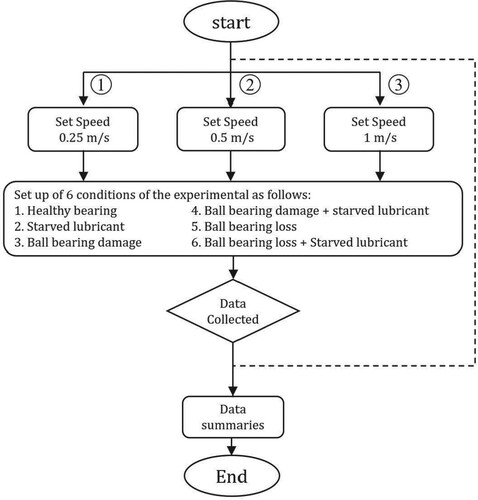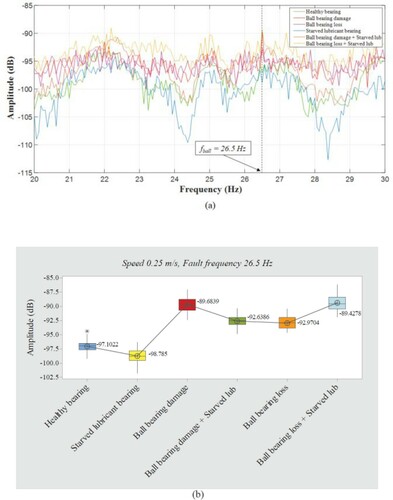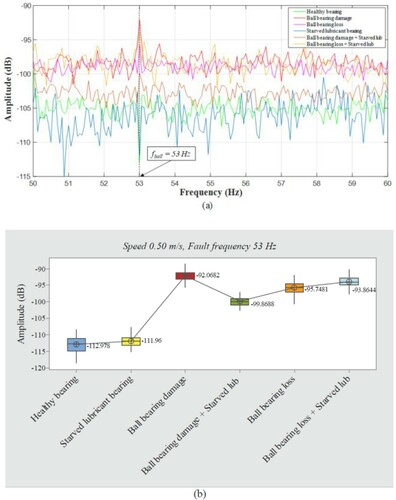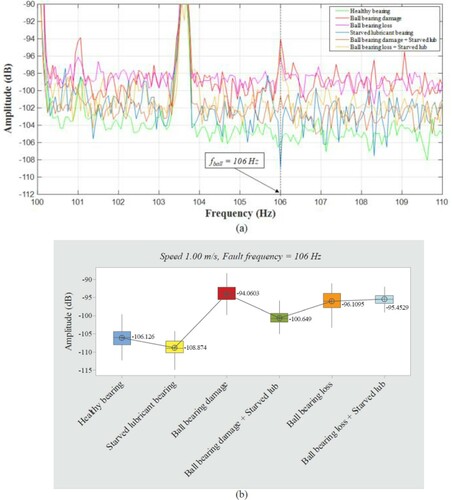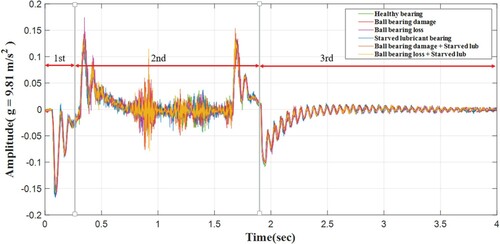Figures & data
Figure 2. HGA process (a) Adhesive dispensing, (b) Slider attachment, (c) Adhesive cure and (d) Soldering.

Figure 4. (a) The impact of vibrations on reference hole positioning and (b) fault position of adhesive dispensing and (c) attached slider misalignment.
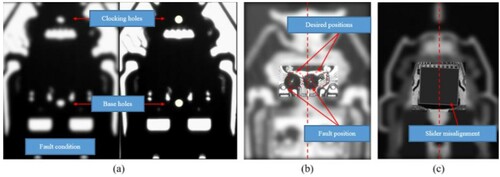
Table 1. The influence of speed on fault frequency.
Table 2. Analysis of variance of current at a motor speed of 0.25 m/s.
Table 3. Analysis of variance of current at a motor speed of 0.50 m/s.
Table 4. Analysis of variance of current at a motor speed of 1.00 m/s.
Table 5. Summary of motor current for all bearing conditions.
Table 6. Crest factor comparison of faulty conditions (0.25 m/s).
Table 7. Crest factor comparison of faulty conditions (0.5 m/s).
Table 8. Crest factor comparison of faulty conditions (1.0 m/s).


